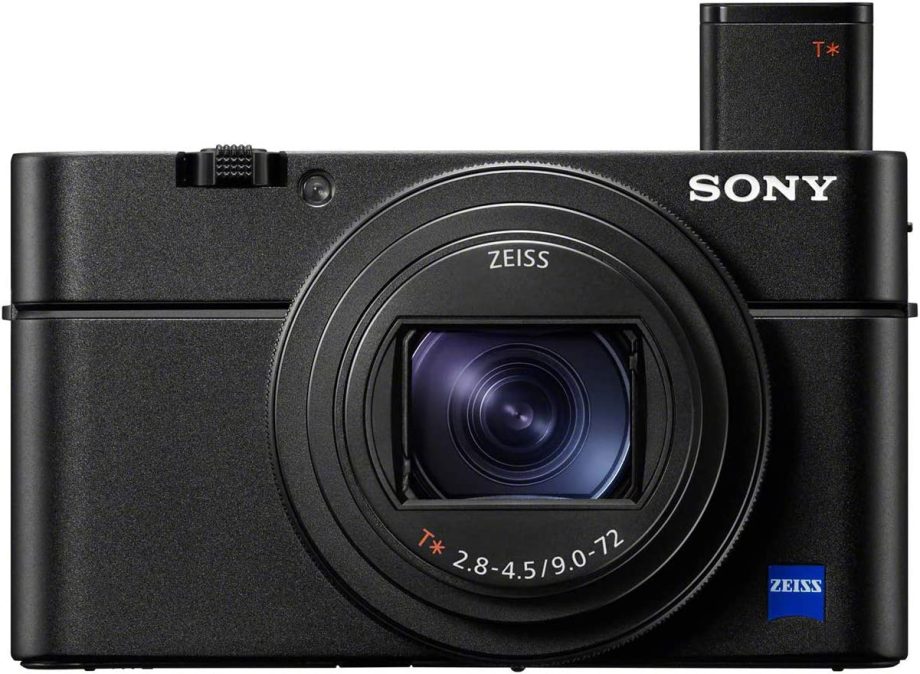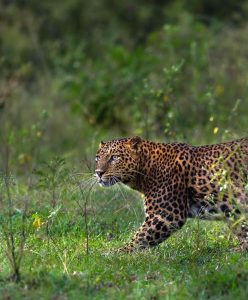Last Updated on November 25, 2023 by Sharon Advik
Sony Cyber-shot DSC-RX100 VII Review:
I’ve always been drawn in by the portraiture’s visual allure for wanderers.
My specialty is candid and street photography because they let me engage with the environment and relive unusual experiences.
I’ve used this gorgeous “Sony Cyber-shot DSC-RX100 VII” camera.
It has included the capability to take unplanned portraits in public settings without a camera.
It creates images to pique my curiosity about photographing people on the street.
I had never captured a movement that was so subtle with this camera.



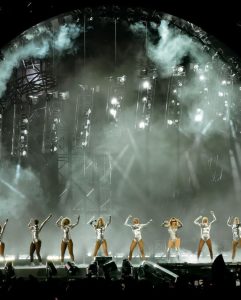


Overview:
Despite its hefty price, I consider this camera the best compact one on the market.
I use it for various types of photography and in multiple settings.
As a fan of the RX100 series, who has owned models 1 and 4 and the seven now, I’m constantly in awe of how Sony enhances and adds features with each new model to keep us RX100 fans interested.
Since the RX performs just as well and is portable, I am doing fine and using my DSLR cameras less and less.
This time, I upgraded to the seven because of the improved tracking and eye detection, longer focal length, and other features that make this model such a versatile camera.
The lack of an integrated ND filter on this model doesn’t bother me much because I’m getting better at adjusting camera settings to work around it.
The best camera to have, in the opinion of seasoned photographers like myself, is the one you have. And since the RX100 is so handy and small, there is no reason not to carry it around.
To summarise, I would say that the RX100 VII is arguably the best of the Sony RX100 series’ great little cameras.
It is pricey for a camera with a 1-inch sensor, though; the front could use a front grip.
Beyond those problems, it has an excellent autofocus system, excellent video credentials, and a nice pocketable size.
Although the stabilization isn’t particularly effective, it makes a perfect camera for everyday use and is a good choice for vloggers.





Specifications:
ISO 125 – 12800(expands to 64)
20MP – 1″ Stacked BSI-CMOS Sensor
24-200 mm F2.8-4.5 Zoom Lens
3.00″ Tilting Screen
Optical Image Stabilization
2360k Electronic dot viewfinder
4K at 30fps Video Recording
FHD at 1000fps Video Recording
20.0fps Continuous Shooting
Built-in Wireless
302g. 102 x 58 x 43 mm
Body, Size, and Weight:
I am in love with this camera’s compact body.
It fits perfectly in my jacket pocket or small bag.
Its construction is primarily made of metal, which I found pretty durable.
Its smooth, flat front, which provides me with little grip, is something I love, though.
As a result, whenever I used this RX100 VII, I always wrapped my hand around the supplied wrist strap.
The strap, however, lacks a synch mechanism, and on one occasion, it came off as I tripped over a tree root, allowing the camera to escape my grasp.
Fortunately, it landed on soft ground, preventing any damage.
I’d be tempted to swap out the included strap for a Peak Design Cuff with a sliding aluminum adjuster to keep it securely on your wrist.
A Sony AG-R2 grip costs £14, so I’d order one, hoping it will fit.
The controls on a camera this small can be challenging for people with large hands, as my brother discovered when using my camera.
The minimalist thumb ridge on the back of the camera is where Sony has placed the movie record button.
On the screen, a record icon would be convenient.
It is a bit challenging to find when I’m in front of the camera, so I tilted it up for viewing from the camera.
The Sony RX100 VII measures 102 x 58 x 43 mm (4.02 x 2.28 x 1.69′′) and weighs 302 g (0.67 lb / 10.65 oz).
Given that large sensor compact type cameras typically weigh 401g, the Sony RX100 VII is remarkably light for its category.
Even better, it is thin—only 43mm thick—and 12mm more delicate than the class average.
I am impressed.
Weather Sealing:
Why would you use such a cute camera for something like that? I demand angrily.
Why isn’t my camera’s body weatherproof?
My camera requires protection.
I wish Sony would add a temperature-filling feature to this camera.
But now I have to be careful to keep it dry and dust-free.
When it was raining, dusting, or muddy, I occasionally had to shoot kids who were having a good time dancing and playing in the streets.
I want to protect my camera because I can’t afford to damage it.
It’s like a bay.
I could have taken more time and pictures in the rain if my camera had been weather-sealed, as that would have eased my concerns about its sturdiness.
Handling:
Considering all of its features, I’d say that using this camera is somewhere in the middle: not too complicated and not too simple.
The Sony RX100 VII can be a little challenging in terms of handling.
This camera can be challenging to handle unless you have delicate fingers like me because its buttons and controls are small, as is the camera body, so it is not for people like my brother, who has large, strong hands.
As I mentioned earlier, the RX100 VII lacks weather-sealed protection, as is typical of most compact cameras.
In light of this, avoid exposing the camera to icy conditions, sand, or water.
But I’m glad that Sony has also unveiled a brand-new leather-look body case for the RX100 series, which also has a lens jacket and a shoulder strap to shield the camera from knocks and shocks.
I advise purchasing the RX100 VII if you plan to use it as a travel camera.
Sony made every effort to create a user-friendly and easy camera while considering the other features.
However, the rear control dial on the RX100 VII can be rotated without the thumb constantly slamming into the side of the LCD screen because it has a thin profile and is flush with the back plate, giving it an advantage over some competitors.
It is frequently tricky on such small bodies, but in this case, it only poses a minor problem once the LCD is slightly pulled away from the body.
When the catch at its side is released, the electronic viewfinder quickly springs up from the top plate, and unlike the RX100 VI, you are no longer required to pull it back before using it.
The lens control ring has a knurled finish, making it easy to use.
The camera rotates with a faint clicking sound to make up for the fact that it is de-clicked and usually does not provide physical feedback.
Using it during my video recording is more appropriate because it is de-clicked. Otherwise, my camera would record operational noises.
Lens:
I’m eager to share with you this camera’s stunning lens.
And believe me when I say I speak like a professional when it comes to it. Let me describe its expertise to you.
The camera’s 24-200mm F2.8-4.5 zoom lens is tiny, providing a wide zoom range equivalent to two standard zoom lenses (24-70mm and 70-200mm).
It is constructed with eight aspherical lens elements for maximum resolution, providing me with clarity and contrast throughout the entire zoom range and to the edge of the image.
I can reduce my photography’s spherical, coma, and chromatic aberrations using four of Sony’s original AA (advanced aspherical) elements.
Sensor and Processor:
Let’s take a look at the processor and sensor of this camera.
You read that right. I’ll describe the expertise that this camera’s sensor and processor possess.
And when I said the words “sensor” and “processor,” I believe I captured everyone’s attention.
Throughout my time with this camera, the updated 20.1MP 1″ Exmor RS CMOS sensor of the RX100 VII has provided me with outstanding image quality from ISO 100–12800 with high-speed performance.
It utilizes an advanced stacked structure with an integrated DRAM chip.
Its sensor can stack the pixel area, a fast signal processing circuit, and memory.
I appreciate that all these features increase data throughput and provide features like single burst shooting, an anti-distortion shutter, UHD 4K video, and more.
This 1″ sensor also has 357 phase-detection AF points and 425 contrast-detection areas for quicker, more accurate focusing.
I’m enjoying it and moving toward the processor of this camera. OMG! It is even deadlier.
Together, this sensor, a new BIONZ X image processor, and front-end LSI significantly increase the speed and throughput of the entire imaging system, allowing for blackout-free continuous Shooting at up to 20 frames per second with constant AF/AE calculations happening 60 times per second.
For capturing the swiftest moments, the Single Burst Shooting function also allows you to record up to seven frames in raw or JPEG at 90, 60, or 30 frames per second.
The front-end LSI and improved sensor performance also raise my images’ perceived resolution and color definition while lowering noise, especially at higher sensitivities.
Autofocusing:
I think the RX100 VII’s improvements to the autofocus system are the most intriguing.
The RX100 IV has 357 phase-detection points and 425 contrast detection points, but as I previously mentioned, it also has a plus Real-time Tracking AF and Real-time Eye AF for humans and animals.
Nonetheless, the RX100 VI is no slouch in this regard.
The Real-time Eye AF for Humans also functions in video mode.
I’m so impressed with this camera’s quick, highly accurate autofocus because it allows me to achieve the fastest acquisition speed in the world—0.02 seconds—to capture fleeting moments accurately.
With the help of 425 contrast-detection AF points, 357 focal-plane phase-detection AF points, and High-density AF Tracking Technology, it is possible to follow even erratically moving subjects reliably.
I adore the new “Real-time Eye AF” feature, which allows me to compose my shot while it detects the subject’s eyes and maintains focus as the subject moves.
It is possible to choose the subject’s left or right eye by half-pressing the shutter, which detects the subject’s eyes.
It can be combined with real-time tracking so that the focus frame automatically switches between the subject’s face and watches as the subject moves.

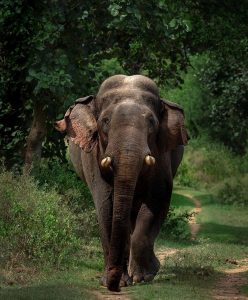


LCD and Viewfinder:
I initially didn’t realize my Sony RX 100 VII had a viewfinder.
A pop-up unit is opened by pulling back on a release catch on one side.
A nice touch is pushing the camera off while flicking it to pop up the viewfinder.
Fortunately, you can turn off the latter choice to ensure the camera turns on even if the viewfinder button is pressed again. Unlike earlier models, this Sony RX100 VII pop-up viewfinder opens with just a flick of the release catch.
The rear element extends out automatically as the viewfinder rises.
In the earliest versions, the back part had to be manually removed.
A real bonus on a small camera, it has a 0.39-inch, 2,359,296-dot OLED viewfinder.
Even if you wear glasses, they’re big enough to give you a good view, and a lot of detail can be seen.
The viewfinder from Sony is coupled with a 3-inch, 921,600-dot screen that can be tilted up or down by 90 degrees.
Because of this, I can use it for both low- and high-level Shooting, which is very useful.
I can touch the screen, but as is customary, Sony hasn’t precisely maximized the touch functionality.
As a result, you can only focus check images by zooming in and setting the AF point on the screen.
You can’t swipe between shots in disappointing review mode.
It is the point I made earlier when mentioning the cons of this camera.
Battery Life:
According to Sony, when images are composed on the screen, the RX100 VII’s battery lasts approximately 260 pictures or 130 minutes of video.
If the screen’s 2-second timer is activated, this increases to 310 images or 155 minutes of video.
A claimed life of about 240 pictures and 120 minutes of video is obtained when framing photos using the viewfinder.
Those numbers came from CIPA testing, and I thought they were pretty accurate.
Before the battery ran out, I took the RX100 VII on a walk along a windy ridge and shot using both the screen and the viewfinder, resulting in 227 images (raw and Jpeg, for a total of 454 files).
The camera was constantly exposed, though, and the wind was bitterly cold.
The Sony RX100 VII’s battery life increased to approximately 259 images after the camera warmed up, with a random mixture of compositions on the screen and in the viewfinder.
Video Quality:
The RX100 VII continues the tradition of Sony’s high-end cameras, including the RX-series models, which have always done an excellent job capturing video.
It produced 1080p (60 fps) and 4K video clips that were vivid, fluid, and detailed (30 fps).
Reviewing the video I shot demonstrates that the Sony RX100 VII can create stunning 4K videos.
The stabilization, however, falls short of mirrorless cameras like the Olympus OM-D E-M5 Mark III.
The footage I captured while moving the camera around is quite jerky.
Including a mic and port is one of the most significant advantages the RX100 VII has over the RX100 VI.
When an external microphone with a windshield alters the sound, the audio in windy conditions is significantly improved.
The High Frame Rate system also produces good results in slow motion.
The camera only records brief video clips—between 3 and 7 seconds, depending on your chosen settings—because slow-motion video works by shooting a short clip and then lengthening the time it takes to play it back.
In 4x slow motion, the RX100 VII can capture 1080p HD video (240 fps).
It can also record 8x and 16x slow motion (480 and 960 frames per second), but the video is lower quality.
Though the Eye AF is equally effective in the video as in stills mode, I found it less trustworthy.


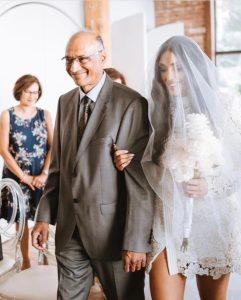


Image Quality:
As I mentioned earlier when describing this camera’s specifications, the RX100 VII’s 1-inch, 20.1-MP CMOS image sensor is used to take still photos and videos.
I had fun using the RX100 VII and was pleased with the output in bright light.
It was generally comparable to the low-light image from the Panasonic ZS200 and, in a few spots, even slightly sharper and more detailed than the ZS200.
Yes, I occasionally encountered noise issues with the images.
Still, I corrected the problem in some cases by utilizing one of the camera’s many potent and creative features.
For instance, the camera has several high dynamic range (HDR) settings that you can use to compensate for difficult lighting conditions, like scenes with a bright background and a dark foreground.
Sony’s HDR mode takes three quick photos, like most cameras do, and combines the three exposures’ best elements into one image.
My picture shows that the two HDR images (on the right side) effectively “expand the dynamic range to display details in both bright and dimly lit environments,” capturing details inside and outside.
In burst mode, the RX100 VII can take a tonne of pictures: 24 frames per second at full resolution, in JPEG or RAW.
Therefore, if you photograph your child playing baseball, you can take many structures to capture the precise moment they contact the ball with the bat.
However, this may be more frames per second than most people require.





Why should one get a Sony Cyber-shot DSC-RX100 VII?
- Better video: Offers 4K/30p movie capture in higher definition.
- It has improved live-view autofocus with on-sensor phase-detection technology for more reliable autofocus.
- When recording audio, a connection to an external microphone improves the sound.
- Simpler framing: Has an electronic viewfinder for controlling settings and image composition.
- More flexible LCD: Tilting screen for portrait shots at unusual angles.
- Fewer buttons to click: has a touchscreen to make shooting and handling adjustments easier.
- Possibilities for selfies are improved by an articulated screen that you can turn to face the front.
- Faster burst: Shoots more frequently (90 flaps per second) to catch the critical moment.
- This camera has an electronic shutter option for utterly silent Shooting, which is less unsettling.
- It has a wider-angle lens for taking pictures of interiors or landscapes.
- It has longer telescopes for perspective compression, subject magnification, and greater reach.
- It has built-in Wi-Fi for automatic backup or image transfer to the web, making file uploading more straightforward.
- More straightforward wireless transfer: Supports Bluetooth for cordless image sharing.
- Accelerated buffer clearing possesses an SD card interface that is UHS-I compliant.
- It has low-frequency shooting with an integrated intervalometer for simple time-lapse photography.
- NFC supports quick wireless image transmission over short distances, making pairing more effortless.
- Modernized: Reflects seven years, one month’s worth of technological advancements since the RX100’s debut.
Price:
The Sony RX100 VII cost $1,199 when first sold in the US.
Retail prices usually start near the launch price.
Before discounts become accessible after a few months, Further discounts and stock clearance sales frequently drive the camera price significantly lower later in the product cycle, especially when the replacement model is about to debut.
After the new model’s release, handsome discounts are frequently discovered on the used car market.
Sony keeps pushing the pricing boundaries while advancing the technology of compact cameras.
The RX100 VII is the priciest model, costing $1,300, or $100 more than the VI.
DESPITE THE PRICE INCREASE, the RX100 VII receives the same rating and Editors’ Choice award as the RX100 VI.
It has slightly better features, and if you’re considering spending $1,200 on a point-and-shoot, you’re also open to a $1,300 model.
Conclusion:
I had a great time using this camera.
After several months of use, I decided to include this camera.
The autofocus system of the Sony RX100 VII makes it a very appealing camera for various people and shooting applications.
It’s perfect for parents who want to photograph their children, dog owners who want to capture their four-legged friend, and anyone who wants to capture the excitement of a vacation.
However, one of the main issues is the price.
It seems excessive, but it is worth buying just for a camera with a 1-inch sensor.
Anyone who vlogs to earn money is considering doing so may find that price more reasonable.
The RX100 VII is very appealing due to its compact size, flip-up screen, and robust video feature set.
The camera’s smooth front drives me crazy.
Related posts:
I am a Professional and Certified Digital Photographer born in the USA. I have been in this field of photography for 22 years, and in these years, I have used many photography lenses and Cameras, which I want to share here on this website about my experience. The idea for Bestoflens.com is to provide honest information about different Lenses and Camera products in the format of a “Best lenses for AYZ” list. I want this website to be the last destination for people to pick the best Cameras and lenses to fit their needs. You can find our unbiased reviews here on Bestoflens.

